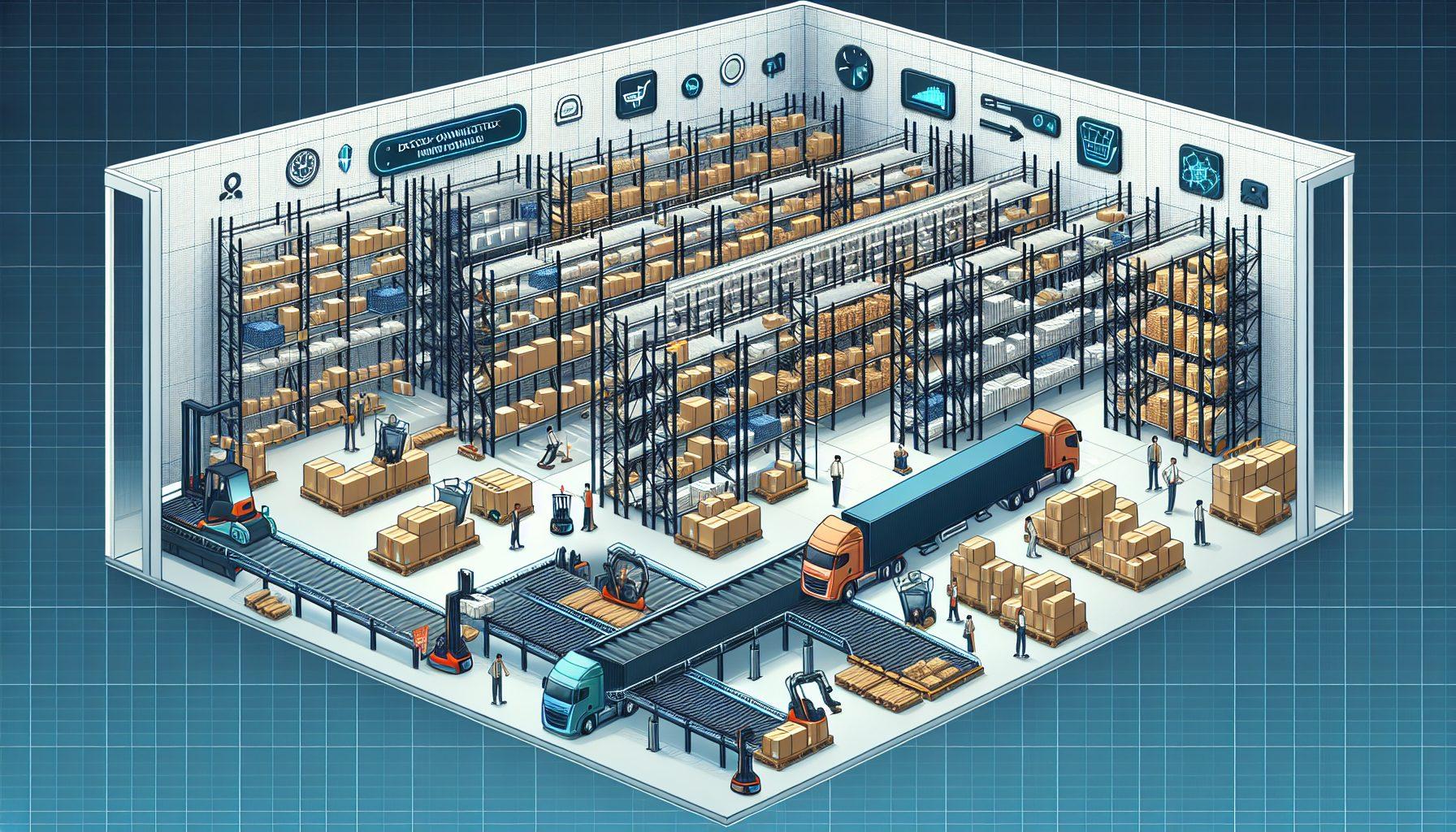In the world of warehouse operations, time is of the essence. Efficient processes and streamlined workflows can make all the difference in meeting customer demands and maintaining a competitive edge. One crucial factor that significantly impacts productivity within a warehouse is the layout.
The Importance of Warehouse Layout
The layout of a warehouse refers to the physical arrangement of its various functional areas, such as storage zones, picking stations, packing areas, and shipping docks. An optimized warehouse layout is designed to promote smooth material flow, minimize travel distances, and maximize space utilization.
When it comes to the dock-to-stock time, which refers to the time it takes for received goods to be put away into designated storage locations, an efficient warehouse layout can have a significant impact. Let’s explore some key factors that can influence dock-to-stock time and how warehouse layout optimization can help reduce it.
Physical Proximity
The physical proximity between the receiving dock and the designated storage areas plays a crucial role in reducing the dock-to-stock time. When the receiving area is located in close proximity to the storage zones, it minimizes the time and effort required to transport the goods to their respective locations.
By strategically positioning the receiving dock near the storage areas or employing a cross-docking strategy, where goods are directly moved from the receiving area to outbound trucks, warehouse layout optimization can minimize the distance traveled and expedite the put-away process.
Clear and Logical Organization
An organized and systematic layout is essential for expediting the put-away process. Through proper labeling, signage, and clear demarcation of storage locations, warehouse personnel can quickly identify and locate the correct storage areas for different product types.
Furthermore, utilizing a logical organization system, such as arranging products based on their frequency of retrieval or following an ABC classification system, enables efficient movement and easy access to high-demand items, reducing the time spent searching for specific products during the put-away process.
Optimal Use of Equipment and Technology
A well-designed warehouse layout takes into account the efficient utilization of equipment and technology. By strategically placing storage racks, conveyor systems, and automated picking equipment, warehouse optimization solutions can minimize travel distances and enhance the utilization of available resources.
Furthermore, implementing cutting-edge technologies like barcode scanners, RFID systems, and warehouse management software can streamline the put-away process by providing up-to-date information, reducing manual errors, and improving overall productivity.
Employee Safety and Ergonomics
A safe and ergonomic warehouse environment is crucial for the well-being and productivity of warehouse personnel. An optimized warehouse layout ensures that walkways are clear and unobstructed, reducing the risk of accidents and injuries.
Incorporating ergonomic principles, such as properly positioning storage racks and workstations to minimize bending, reaching, and lifting, can also contribute to faster and safer put-away processes. By promoting employee safety and well-being, warehouse layout optimization ultimately leads to increased efficiency and reduced dock-to-stock time.
Continuous Improvement and Evaluation
Warehouse layout optimization is not a one-time project. As business needs and product portfolios evolve, it is important to regularly evaluate and fine-tune the layout to ensure it remains efficient and aligned with operational goals.
HCO Innovations, a leading provider of warehouse optimization solutions, offers comprehensive warehouse layout evaluation services. By assessing current layouts, identifying bottlenecks, and recommending improvements, they help businesses optimize their warehouse operations and reduce dock-to-stock time. Click here to learn more about their warehouse layout evaluation services.
In conclusion, an optimized warehouse layout is essential for reducing dock-to-stock time and improving overall warehouse productivity. Factors such as physical proximity, clear organization, optimal utilization of equipment and technology, employee safety, and continuous improvement all contribute to a streamlined put-away process. Investing in warehouse layout optimization can provide businesses with a competitive edge by enhancing efficiency, maximizing space utilization, and ultimately improving customer satisfaction.

